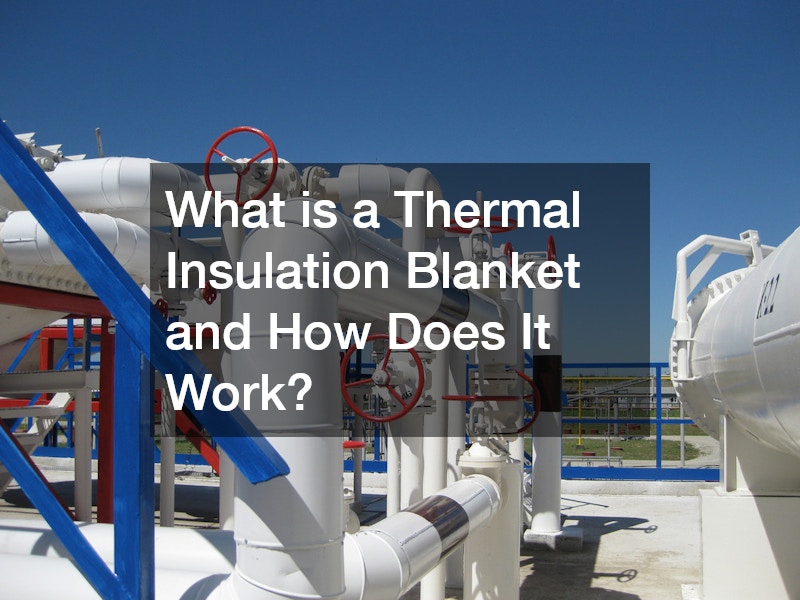Thermal insulation blanket is a pivotal tool utilized in various sectors to improve energy efficiency and maintain stable temperature environments. These blankets serve as barriers that significantly reduce heat transfer, optimizing energy usage and thereby promoting sustainability. Understanding their design and functionality is crucial for industries aiming to lower energy consumption and uphold environmental standards.
The deployment of thermal insulation blankets across different applications demonstrates their versatility and effectiveness in tackling energy inefficiency. By mitigating heat loss, they not only enhance comfort but also extend the longevity of equipment by maintaining ideal operating conditions. Thus, these blankets play a vital role in the contemporary drive towards more sustainable and energy-efficient operations.
How do Thermal Insulation Blankets Work?
The Science Behind Thermal Insulation
The science of thermal insulation revolves around the principles of heat transfer, specifically conduction, convection, and radiation. Thermal insulation blankets are designed to minimize these forms of heat transfer, ensuring that the interior temperature remains stable while reducing external heat gain or loss. By creating a barrier against heat flow, they effectively lower the thermal conductivity of the surfaces they cover.
An essential factor in the efficacy of thermal insulation blankets is their ability to trap air or other gases within their structure. This trapped air acts as an additional layer that impedes the conduction and convection of heat. Consequently, the overall energy exchange is minimized, which is particularly beneficial in industrial environments that require precise temperature control to maintain operational efficiency.
Materials Used in Thermal Insulation Blankets
Thermal insulation blankets are manufactured using a variety of materials, each selected for its unique insulating properties. Common materials include fiberglass, mineral wool, and silicone-coated fabrics, which offer a broad spectrum of heat resistance and insulation efficiency. Fiberglass, for example, is renowned for its ability to retain heat owing to its low thermal conductivity.
Applications in Various Industries
The utility of thermal insulation blankets spans a wide array of industries, reflecting their adaptability and effectiveness in improving energy efficiency. In the industrial sector, they are frequently used to insulate equipment such as boilers, piping systems, and heat exchangers, where maintaining consistent temperature is essential for optimal performance. The use of these blankets in such settings not only reduces energy consumption but also extends the lifespan of expensive machinery by protecting it from extreme temperatures.
Benefits of Using Thermal Insulation Blankets
Energy Efficiency Improvements
Thermal insulation blankets are pivotal in improving energy efficiency, leading to substantial cost savings in both industrial and commercial settings. By minimizing heat loss or gain, these blankets reduce the need for supplemental heating or cooling, thereby lowering energy consumption significantly. This reduction translates into decreased operational costs, allowing businesses to allocate resources more effectively to other critical areas.
Environmental Impact
The eco-friendly nature of thermal insulation blankets makes them a valuable asset in the global effort towards sustainability. By reducing energy consumption, these blankets play a vital role in curbing the demand on power plants and thus decreasing the emission of harmful pollutants. Their use supports compliance with environmental regulations, which are becoming increasingly stringent across the globe.
In contexts such as construction, the implementation of thermal insulation blankets reduces the need for energy-intensive building systems. This contributes to the development of green buildings that have less environmental impact throughout their lifecycle. Thus, thermal insulation blankets not only optimize energy use but also align with broader environmental sustainability goals.
Choosing the Right Thermal Insulation Blanket
Key Considerations and Criteria
When selecting a thermal insulation blanket, several key factors need to be assessed to ensure optimal performance. The material type, thickness, and thermal resistance of the blanket are crucial aspects that determine its suitability for specific applications. Understanding the requirements of the environment in which the blanket will be used is imperative to select the appropriate insulation solution.
Thermal insulation blankets play an indispensable role in enhancing energy efficiency and ensuring safety across various industries. Their ability to minimize heat transfer, improve energy conservation, and provide safety benefits underscores their significance in modern insulation applications. By selecting the right thermal insulation blanket, industries can achieve substantial energy savings, reduced environmental impact, and improved operational safety.
Through informed selection, customization, proper installation, and ongoing maintenance, these blankets offer lasting solutions tailored to the specific needs of their applications. The diverse range of materials and customization options ensures that thermal insulation blankets can meet the demands of a variety of environments and operational requirements effectively. As industries continue to prioritize energy efficiency and sustainability, the role of thermal insulation blankets is set to grow even more prominent.
With their manifold benefits and contributions to energy reduction and safety, thermal insulation blankets are a valuable investment for any industry seeking to optimize energy usage and align with sustainable practices. Their continued evolution and adoption pave the way for more efficient and environmentally responsible operations across the globe.

